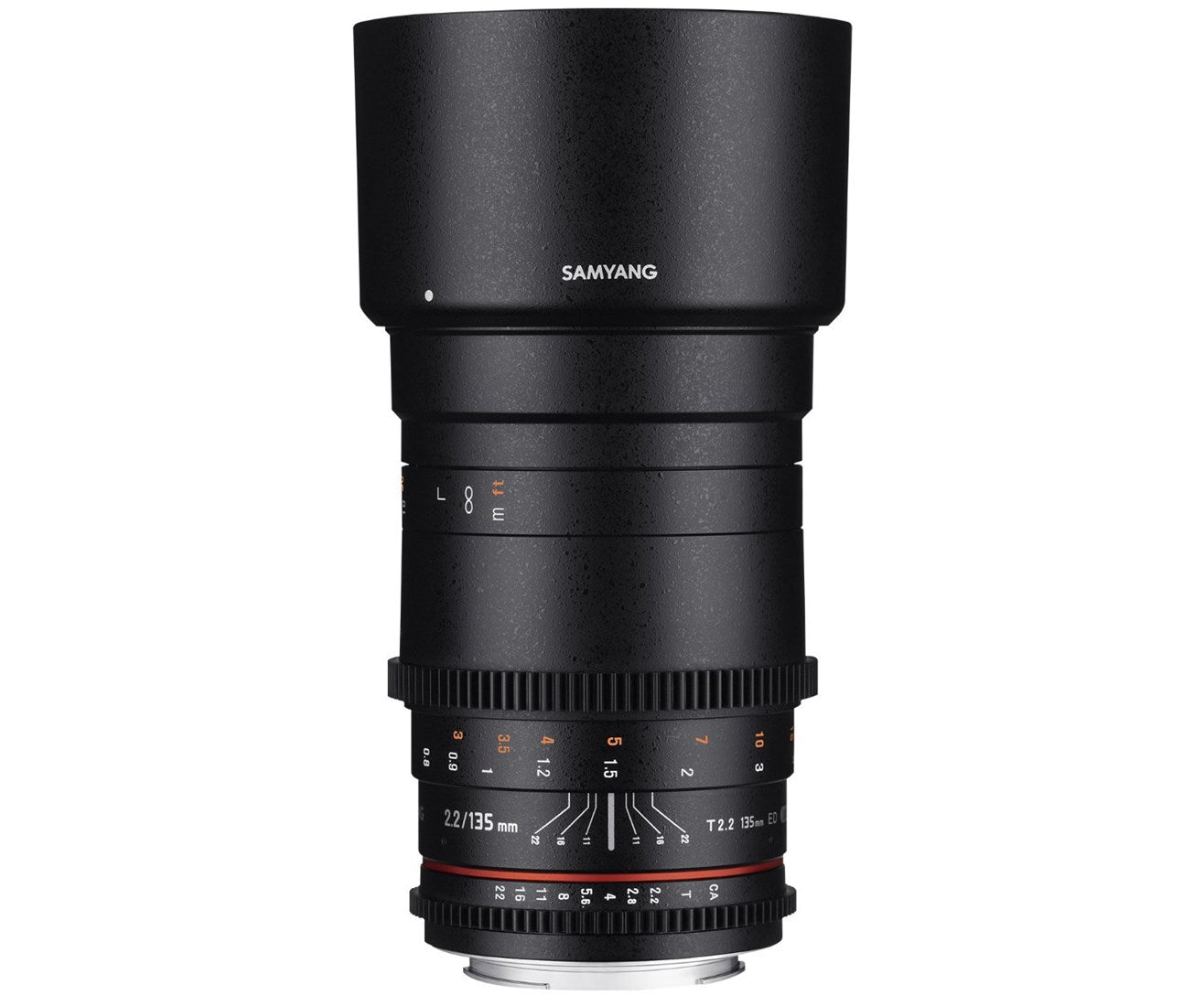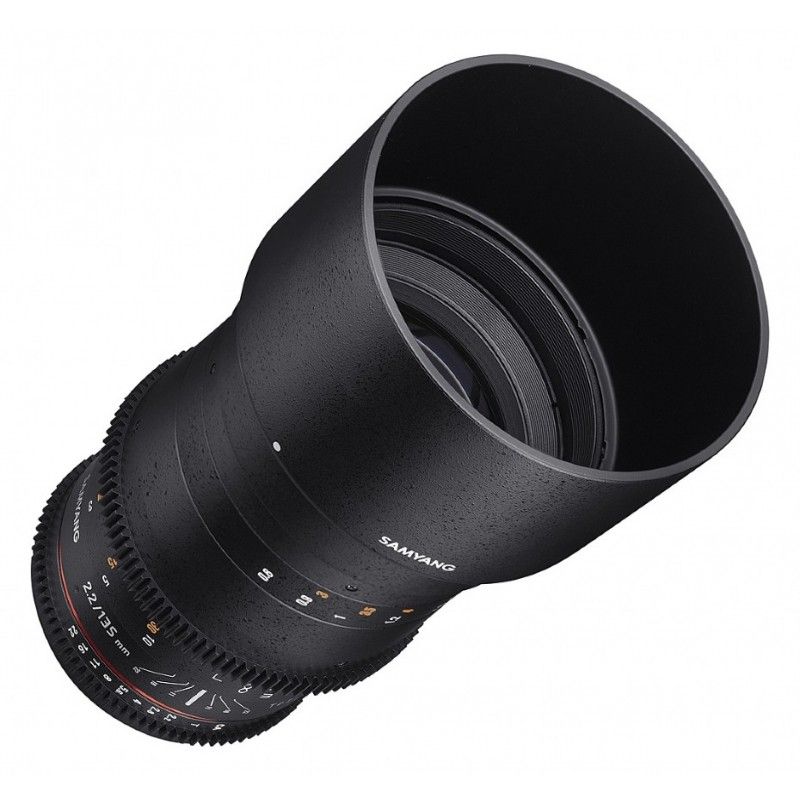Product Description
Samyang 135mm T2.2 VDSLR Manual Focus Video Lens for Sony-E
- Industry Standard 0.8 pitch gearing on Focus and Iris rings
- Hybrid aspherical lens (H-ASP) and glass aspherical lens (ASP) elements
- De-clicked aperture movement and toothed focus and aperture rings provide smooth operation while shooting video.
- Features the latest generation multi-layer anti-reflection ultra multi-coating (UMC) to minimise flare and ghosting
- Circular aperture with 9 blades
Manual Focus Telephoto Cine Lens
Samyang Optics 135mm T2.2 VDSLR ED UMC is a manual focus telephoto cine lens for full-frame sensor sizes. It expresses vibrant colour and soft out-focusing area which makes it the best lens to shoot portraits, night scenery, wildlife and journalism photography.
VDSLR Cine Lens Features
Samyang 135mm T2.2 VDSLR ED UMC allows more delicate video work with T number marks. The focus gear ring is installed for follow focus system. You may change the aperture quietly and smoothly with the uncoupled aperture gear rings. Also, the distance scale and T numbers are marked on both sides of the lens for convenience.
Optical Features
Samyang 135mm T2.2 VDSLR ED UMC is a manual focus lens with a low T number. You may control the lens precisely when shooting under various exposure environments including relatively dark or too bright situations. This lens features 11 lenses in 7 groups, especially including an extra-low dispersion lens (ED) to offer high resolution throughout the image. Ultra Multi Coating(UMC) of Samyang Optics is used to optimize the light penetration and minimize flare and ghost. With such optical construction, it has 0.8m of minimum focal length to film subjects in the near distance. Also, the floating type design secures as much light as possible and maximizes the resolution by minimizing spherical aberration and distortion.
Hardware Features
There are 9 aperture blades designed to be almost as a full circle when the aperture is closed which expresses starlike rays clearly and beautifully. The frame of the lens is compact and solid since it is made of high-strength aluminium alloy so you can create trustworthy images. Also, a detachable petal-shaped lens hood minimizes flare and ghosts by sheltering the lens from unnecessary lights.
Samyang Optics VDSLR II Cine Lens Line Up
Samyang 135mm T2.2 VDSLR ED UMC is one of Samyang Optics VDSLR II Cine Lens Line Up for full-frame image sensor sizes. The lenses produce the same image colour and have a united location of aperture and focus gear ring to maximize convenience when filming.




















